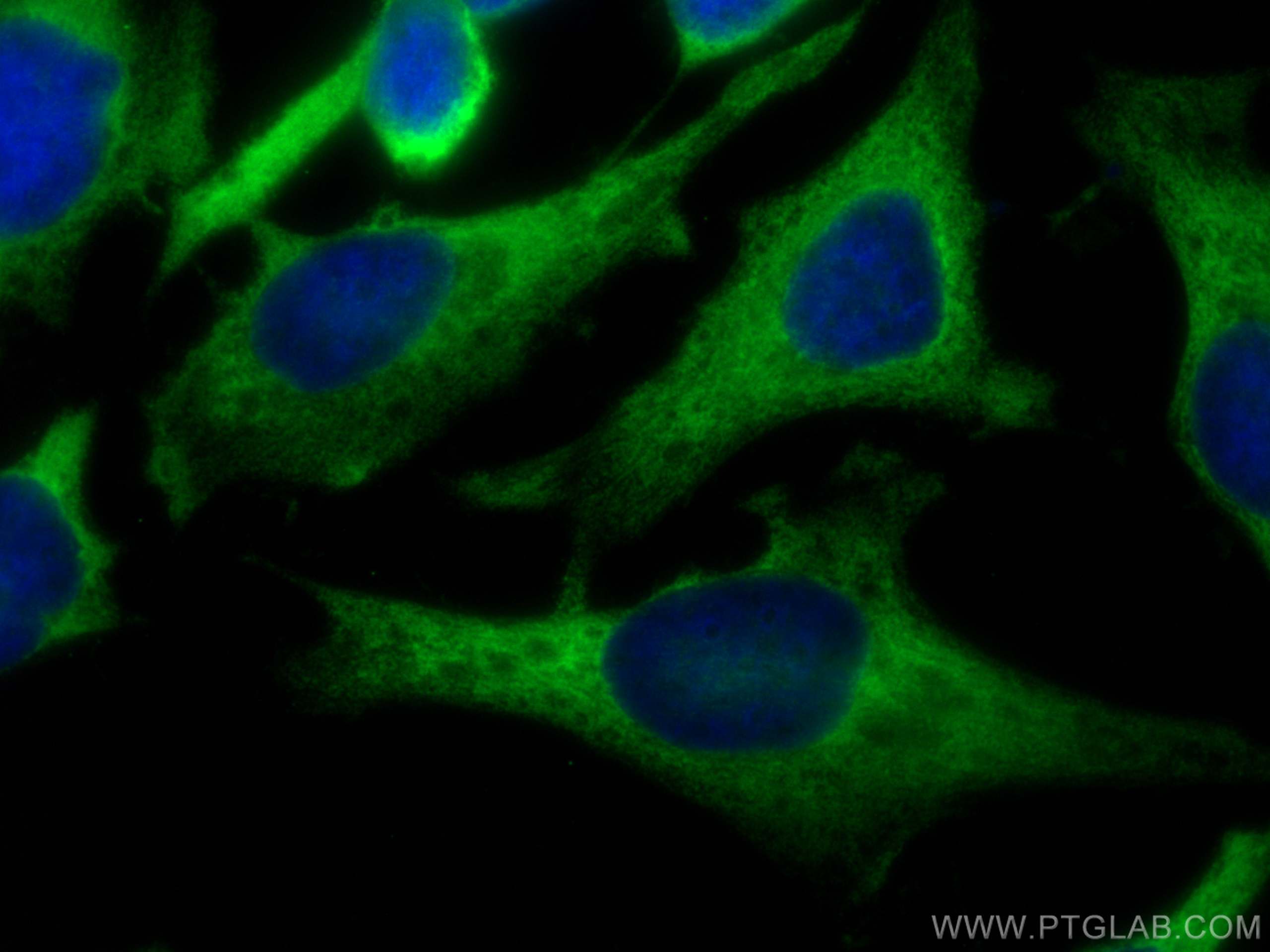CoraLite® Plus 488-conjugated EEF1G Monoclonal antibody
EEF1G Monoclonal Antibody for IF
Host / Isotype
Mouse / IgG2b
Reactivity
Human, Pig, Rabbit
Applications
IF
Conjugate
CoraLite® Plus 488 Fluorescent Dye
CloneNo.
1G7C6
Cat no : CL488-68148
Synonyms
Validation Data Gallery
Tested Applications
| Positive IF detected in | HeLa cells |
Recommended dilution
| Application | Dilution |
|---|---|
| Immunofluorescence (IF) | IF : 1:50-1:500 |
| Sample-dependent, check data in validation data gallery | |
Product Information
CL488-68148 targets EEF1G in IF applications and shows reactivity with Human, Pig, Rabbit samples.
| Tested Reactivity | Human, Pig, Rabbit |
| Host / Isotype | Mouse / IgG2b |
| Class | Monoclonal |
| Type | Antibody |
| Immunogen | EEF1G fusion protein Ag0218 相同性解析による交差性が予測される生物種 |
| Full Name | eukaryotic translation elongation factor 1 gamma |
| Calculated molecular weight | 50 kDa |
| Observed molecular weight | 50 kDa |
| GenBank accession number | BC006520 |
| Gene symbol | EEF1G |
| Gene ID (NCBI) | 1937 |
| Conjugate | CoraLite® Plus 488 Fluorescent Dye |
| Excitation/Emission maxima wavelengths | 493 nm / 522 nm |
| Form | Liquid |
| Purification Method | Protein A purification |
| Storage Buffer | PBS with 50% Glycerol, 0.05% Proclin300, 0.5% BSA, pH 7.3. |
| Storage Conditions | Store at -20°C. Avoid exposure to light. Stable for one year after shipment. Aliquoting is unnecessary for -20oC storage. |
Background Information
Eukaryotic translation elongation factor 1 (EEF1G, synonym: EF1G) is a subunit of the elongation factor-1 complex, which is responsible for the enzymatic delivery of aminoacyl tRNAs to the ribosome. This subunit contains an N-terminal glutathione transferase domain, which may be involved in regulating the assembly of multisubunit complexes containing this elongation factor and aminoacyl-tRNA synthetases.
Protocols
| Product Specific Protocols | |
|---|---|
| IF protocol for CL Plus 488 EEF1G antibody CL488-68148 | Download protocol |
| Standard Protocols | |
|---|---|
| Click here to view our Standard Protocols |


